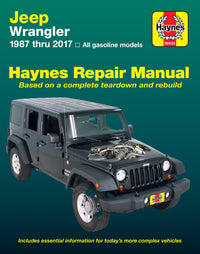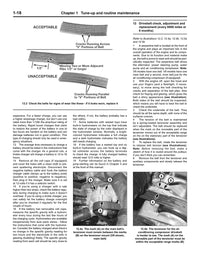Brake pads wear out. There's simply no avoiding it, mainly because they're designed to wear with use. In doing so, they save much more expensive parts from needing to be replaced. But you need to keep an eye on them, because while wear won't cause a catastrophic failure, it can increase stopping times.
What could have been a close call, may now result in a fender bender instead.
Ideally you’ll want to replace your brake pads before they get to this point where the metal baking plate contacts the brake rotor, because it can quickly wear grooves in it. That’s why it is important to check the thickness of your brake pads at every tire rotation, or at least once a year.
Why Do Brake Pads Need To Be Checked?
They may only be small, but the brake pads play a vital role! The braking system consists of hydraulically actuated pistons, within the brake calipers. The pistons force the brake pads against the brake discs and use friction to convert kinetic energy (motion) into thermal energy (heat) – which is why brakes get hot in use.
The actual pad consists of a steel backing plate covered with a layer of high friction material. As you brake, minute amounts of this material are worn away by rubbing the disc, and create the dust which coats your wheels.
The composition of the friction material is what dictates how well the pads grip or bite, and how quickly they wear. Different compounds of pad may last longer, but not bite as hard, or resist brake fade caused by heat.
There is always a trade off between performance and service life, and some pads are designed to keep working in extremes of heat that would otherwise damage a 'normal' brake pad.
As the pads wear down they need to be replaced well before the steel backing makes contact with the disc. Some pads require a visual inspection, some incorporate audible wear indicators (that squeal as the brakes wear low), and others contain sensors that trigger a warning light on the dashboard when they get to a prescribed limit
Discover how to replace the front brake pads on your car!
What Is the Minimum Thickness For Brake Pads?
There is no federal safety standard for the minimum brake pad material left, but in the UK the legal minimum is 1.5mm. A new brake pad will be around 12mm thick or 1/2 inch, and pads with sensors typically start to warn you when they get to 3mm or 1/8 inch, with a squeal or a warning light on the dash. Most manufacturers and mechanics will also agree that you should probably replace your brake pads once they reach 75% worn, or 3mm thick.
Checking Front Brake Pad Thickness
Since the front brakes do roughly three quarters of all the braking, they tend to wear out three times faster than the rear, unless you drive a truck and haul heavy loads or tow. Rear disc pads can be checked similarly, but rear drum brakes are much harder to check.
- Park on a level surface, block the wheels and set the parking brake.
- Loosen the front lug nuts.
- Jack up the front of the car and support it securely on jack stands.
- Remove the front wheels.
- With the wheel removed, the pad thickness can usually be seen through the edge of the caliper.
- If you can only measure or see one, it can be assumed the other one is worn at least that much if not more.
- There is no need for an exact measurement, because it is as easy to replace the pads as it is to pivot the caliper and measure the pad exactly.
- Reinstall the wheels, and lower the car to the ground.

Other Indications That Pads Are Worn
Pedal Feel
When driving you may notice you have to press the pedal further to get the same amount of braking. That’s a dead giveaway the brake pads are wearing out. Stepping on the brakes only moves the pads a very small amount, but magnifies the force you use on the pedal, for thousands of pounds of clamping. The hydraulic system is supposed to automatically adjust for the wear of the friction material, but it isn't perfect.
If your brakes are extremely worn, the system may need all the brake fluid in the master cylinder to compensate. Run the master cylinder reservoir dry and you'll get air int eh brake lines and extremely mushy pedal feel.
Noises
When you have to brake hard, if there is a deep whooshing or groaning sound, that’s a sign your pads are getting low. Most modern brake pads have little metal tabs set to contact the disc when the pad is 3/2rds or 3/4ths of the way worn, which creates a high pitched squeal. The wear indicator squeal will go away briefly when you step on the brakes.
The tabs won't damage anything by rubbing on the disc, but let it go too long, and you may end up with no friction material. If the metal backing plates grind on the discs it is much less effective at stopping, but also damages the discs.
Mileage
There is no hard and fast rule with how long a set of pads should last, however, you can apply a bit of common sense. Generally speaking, pads can last from 25,000 to 60,000 miles. If you have three kids and you drive a big, heavy people SUV, you’re looking at the lower number, especially if you do any towing. If you drive an economy car, or a hybrid, then you’re going to be looking at the bigger number. But also, think, really think about your driving. Are you an early braker? Are you late on the brakes? Do you gently come to a stop or tend to stand on the brakes? All this can affect the life of the pads. Hard braking means a short life.
Pulling
Does your car pull to one side or the other when you hit the brakes? If it does, this could be a sign the pads are worn unevenly, a pad askew in the caliper, or a caliper that is sticking. This is where you need to go back to a visual inspection of both sides for even amounts of wear. If one side has little wear, that caliper may be bad. Or if a brake pad is worn on one edge and not the other, it may not be contacting the disc parallel and solidly..
Even if just one side is worn, brake pads should always, ALWAYS be changed in pairs. Never change just one side. Pads are only sold in sets of four anyway, with a pair for each caliper.
What Are Brake Pads Made Of?
There are lots of different types of friction material but the main types are are:
- Non-metallic/Organic – a combination of substances bonded together, originally they were mostly asbestos. Short service life, but quiet and reduced brake disc wear. These are the most common pads fitted to cars and trucks.
- Semi-metallic – Synthetic substances, plus metal compounds. Harder wearing than non-metallic, but harder on brake discs, and can give poor pedal feel until warm/hot.
- Fully-metallic – Generally reserved for race applications. Can withstand huge temperatures, but need to be hot to work effectively and are very hard on discs.
- Ceramic-metallic – Composed of a dense ceramic material and copper strands. The most expensive of all the pad materials, consistent performance whatever the temperature, extremely quiet operation and brake dust that doesn't stick to your wheels!
Pad material is chosen to work within an optimum temperature range – hence you'll get different pads designed for a hatchback economy car, compared to those fitted to a big truck or sports car.
Not only is the friction material different, but the size of the pads can vary, with large or performance cars featuring substantially bigger pads than more humble vehicles.
















